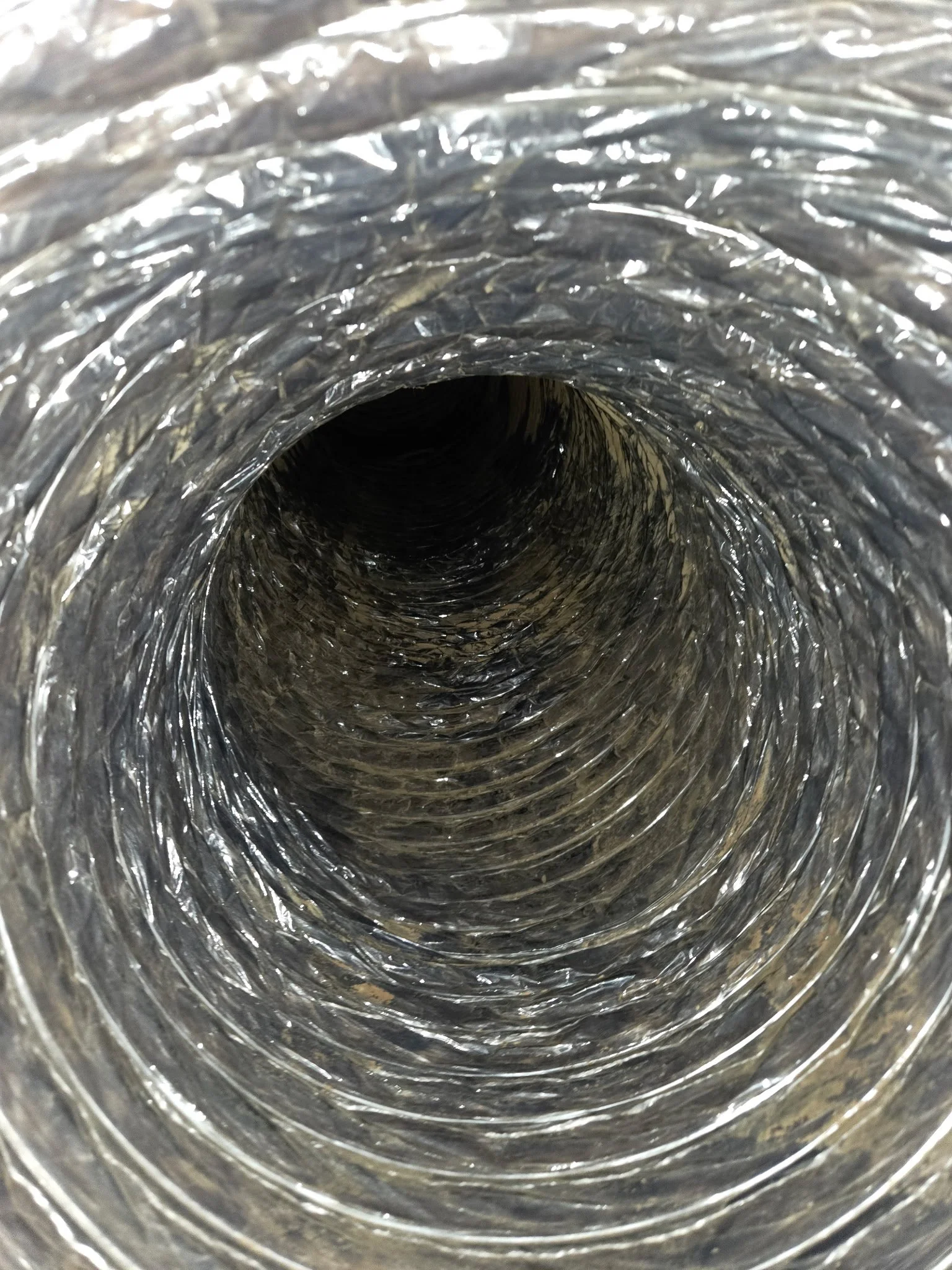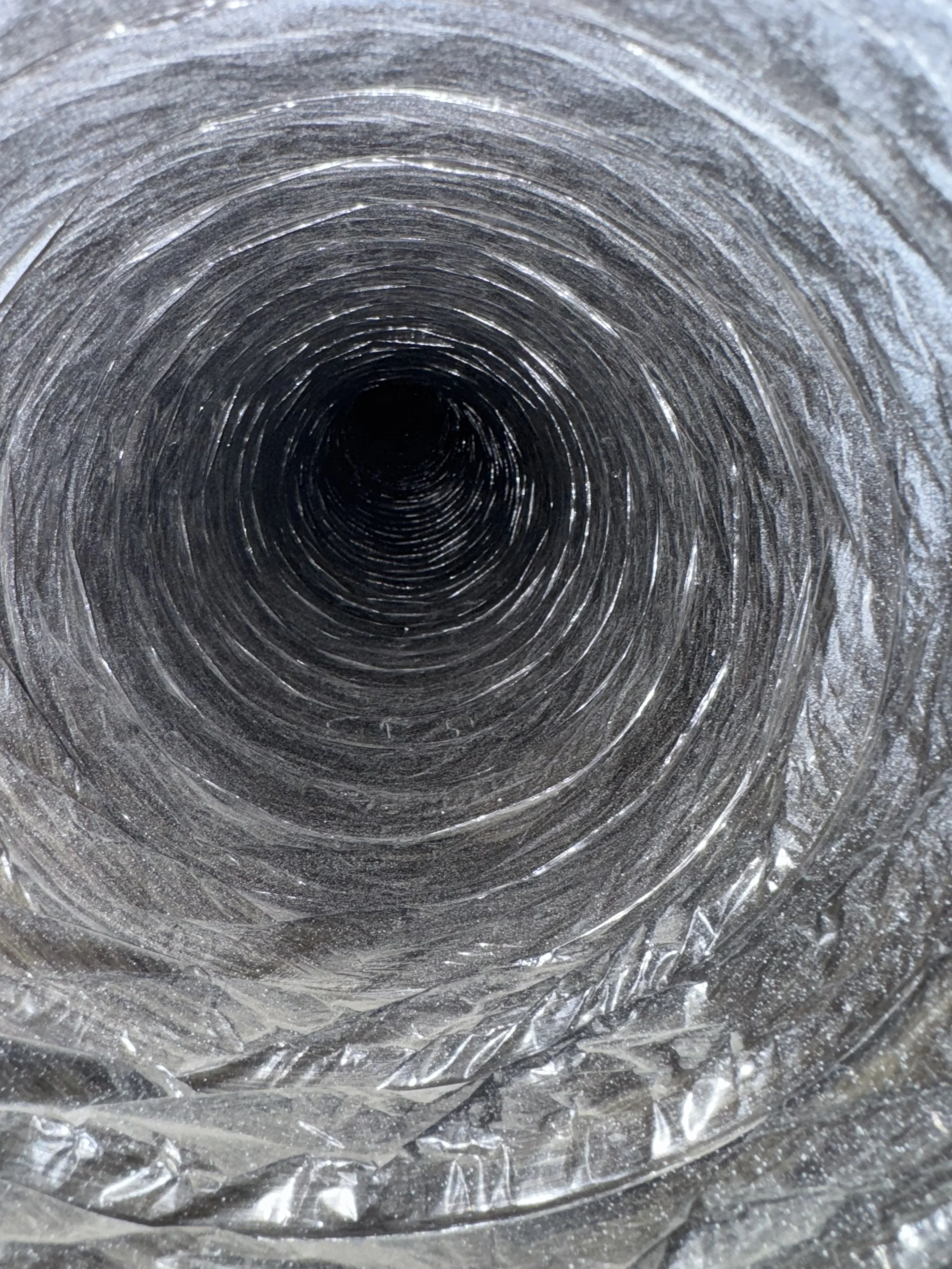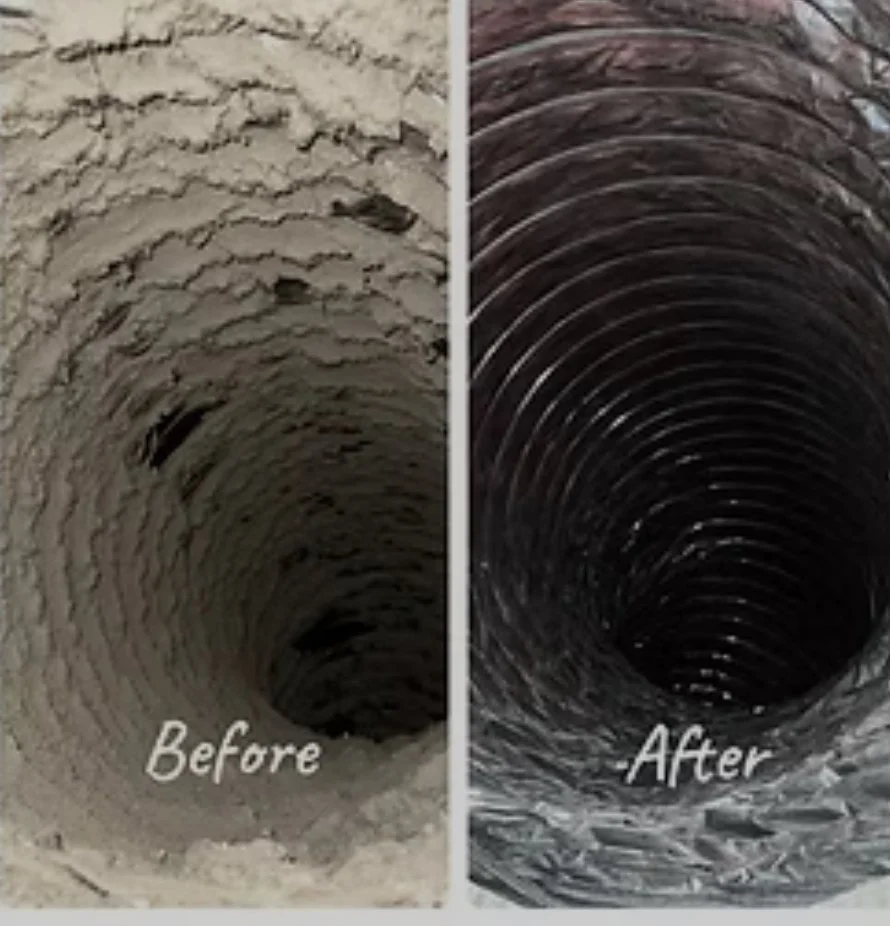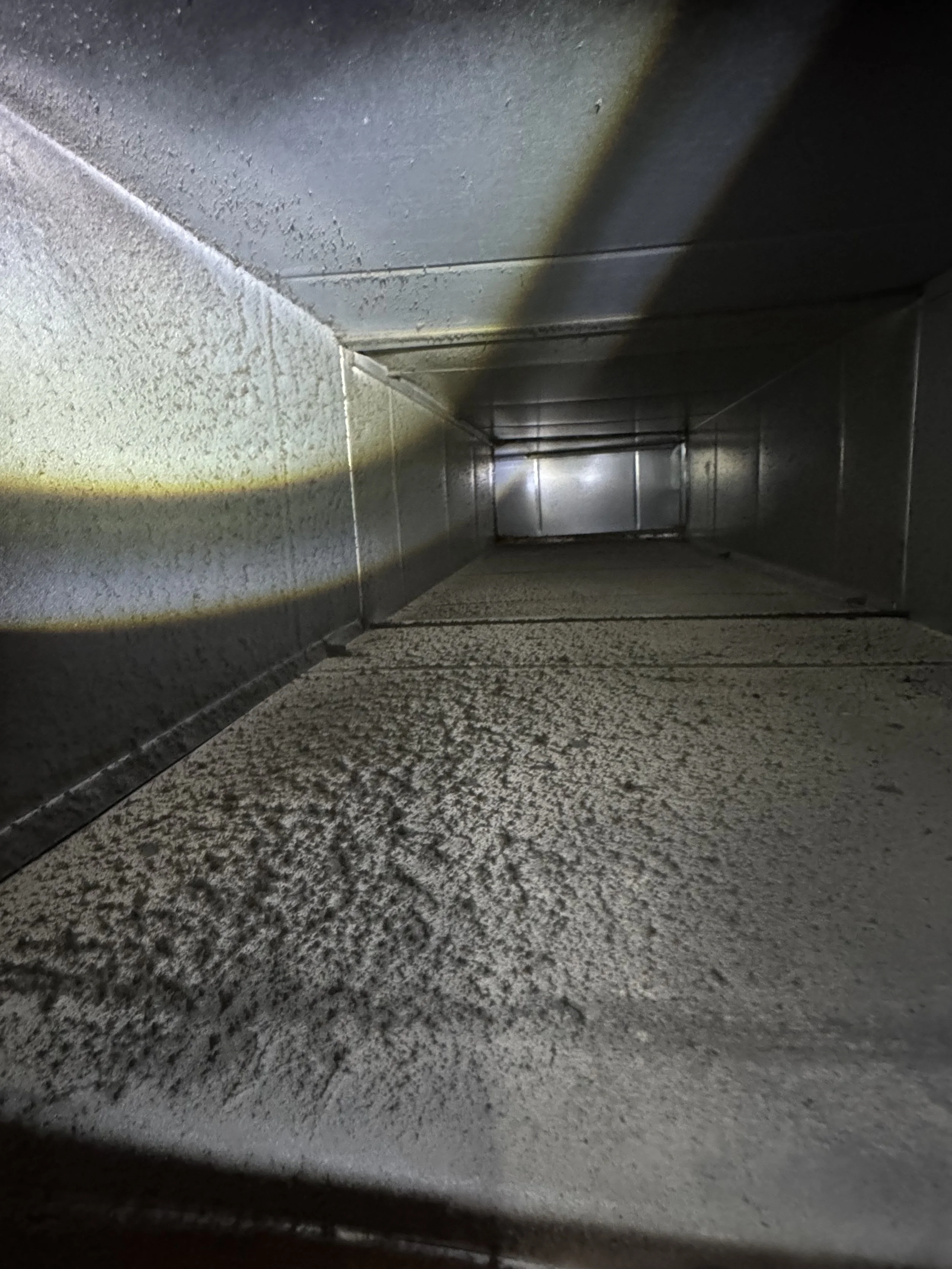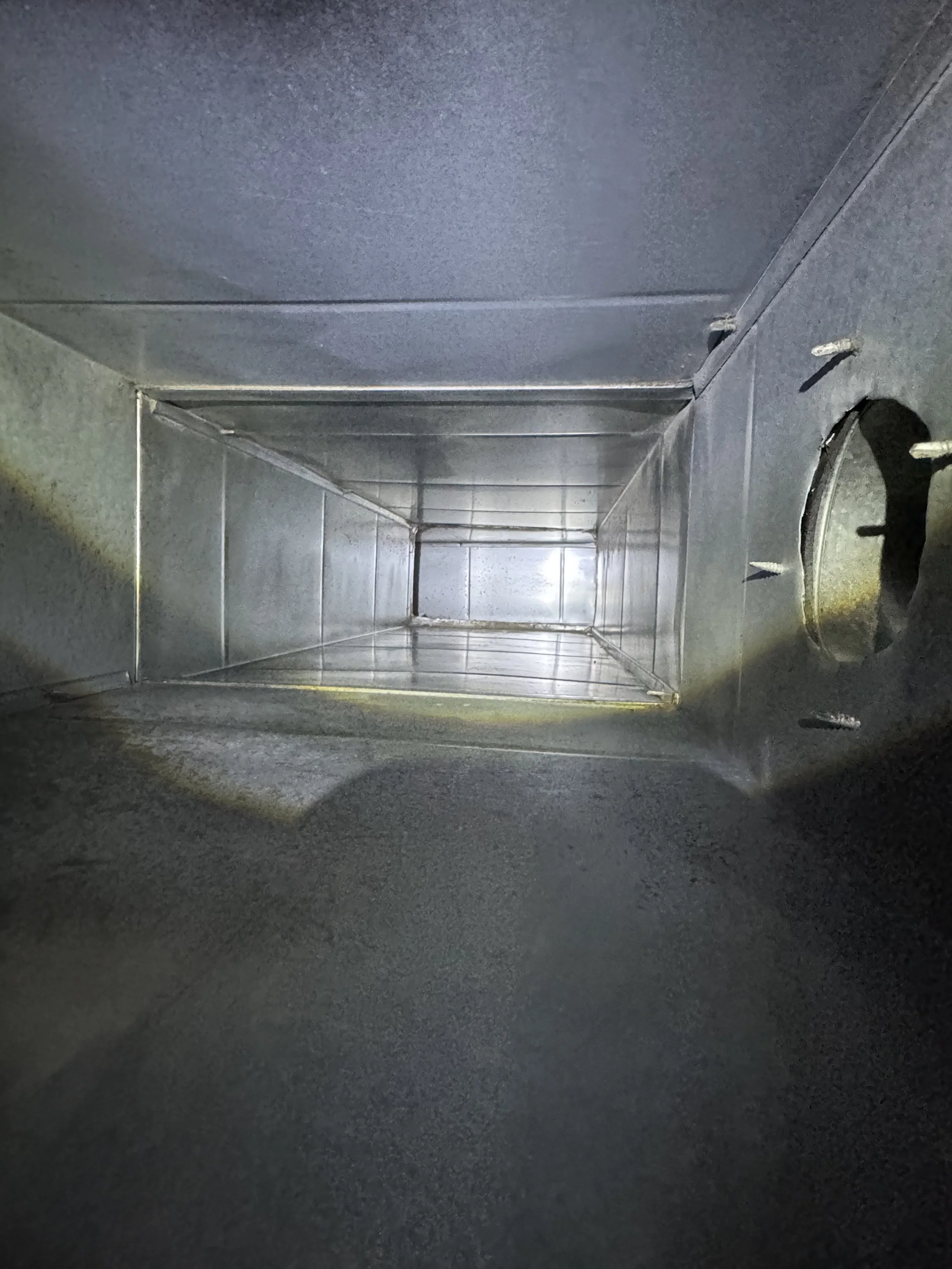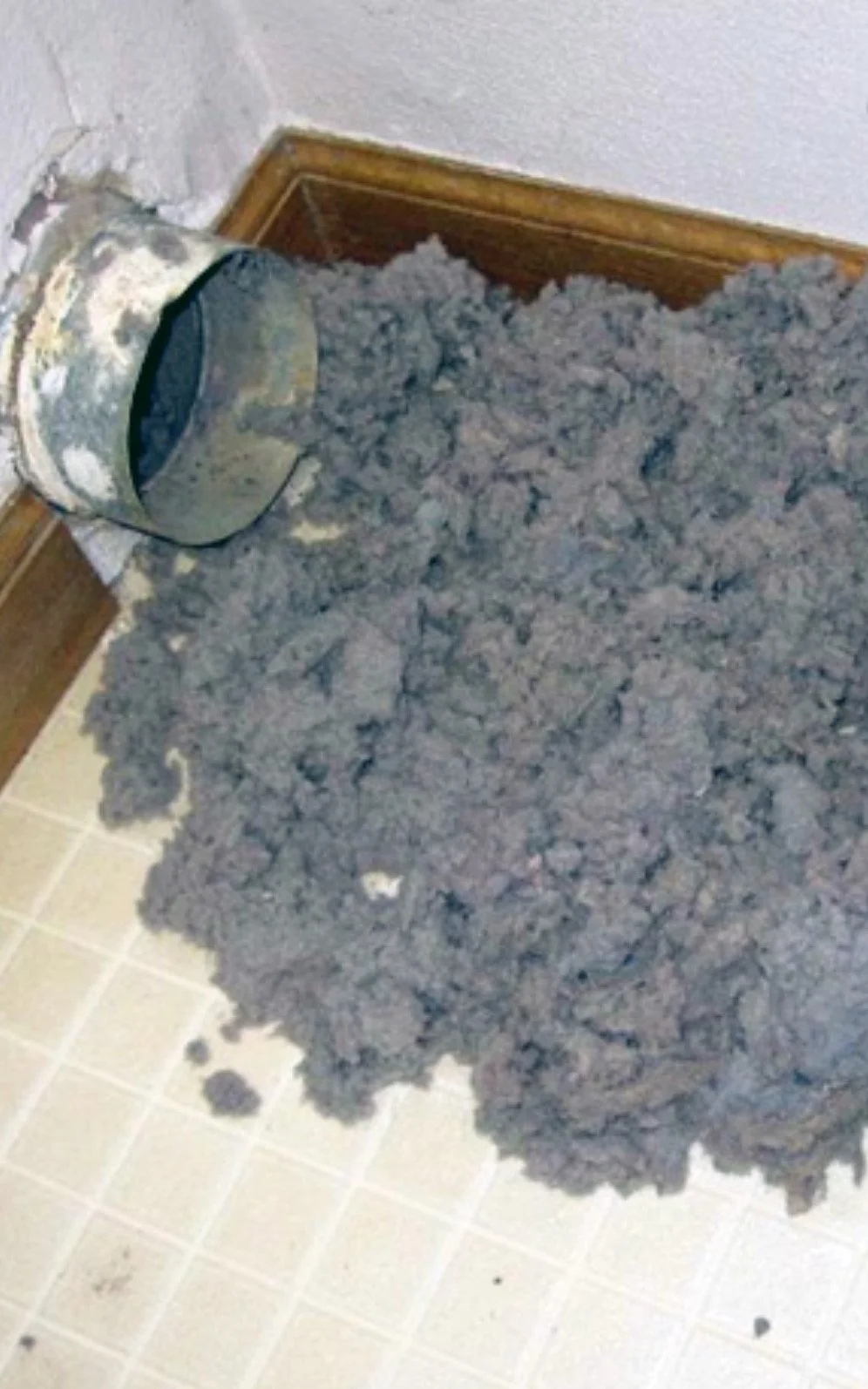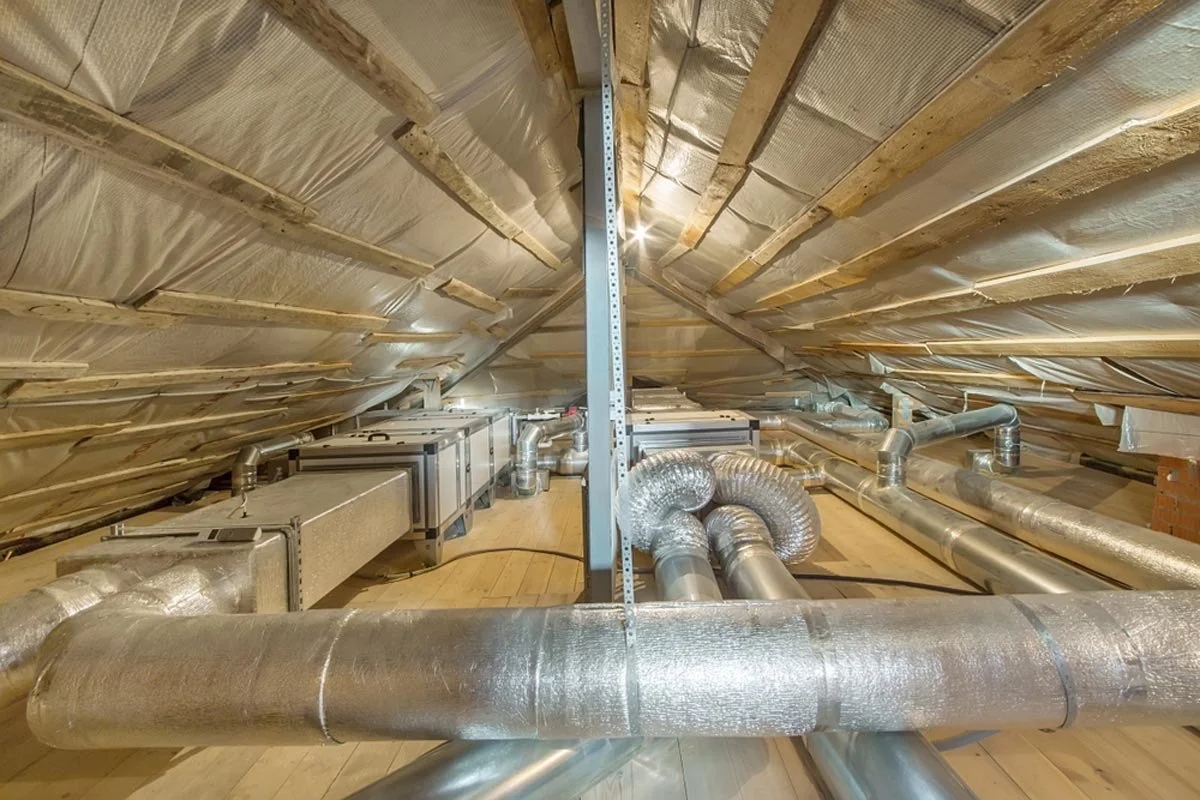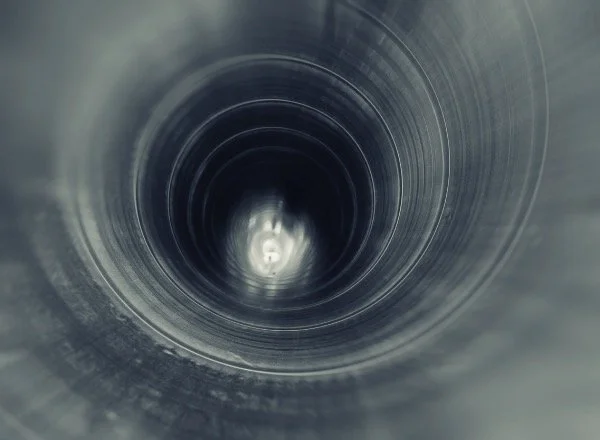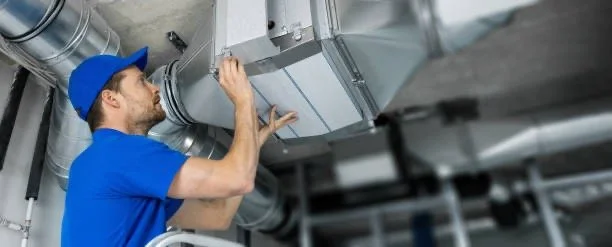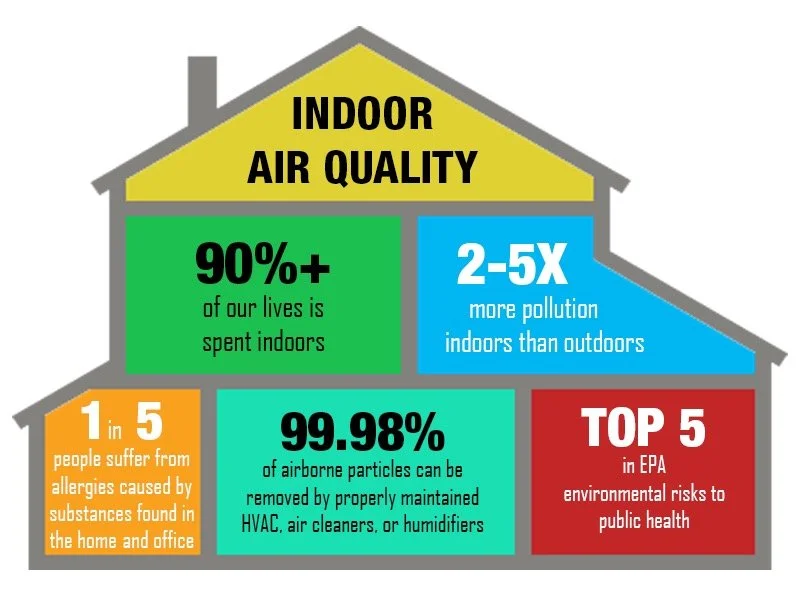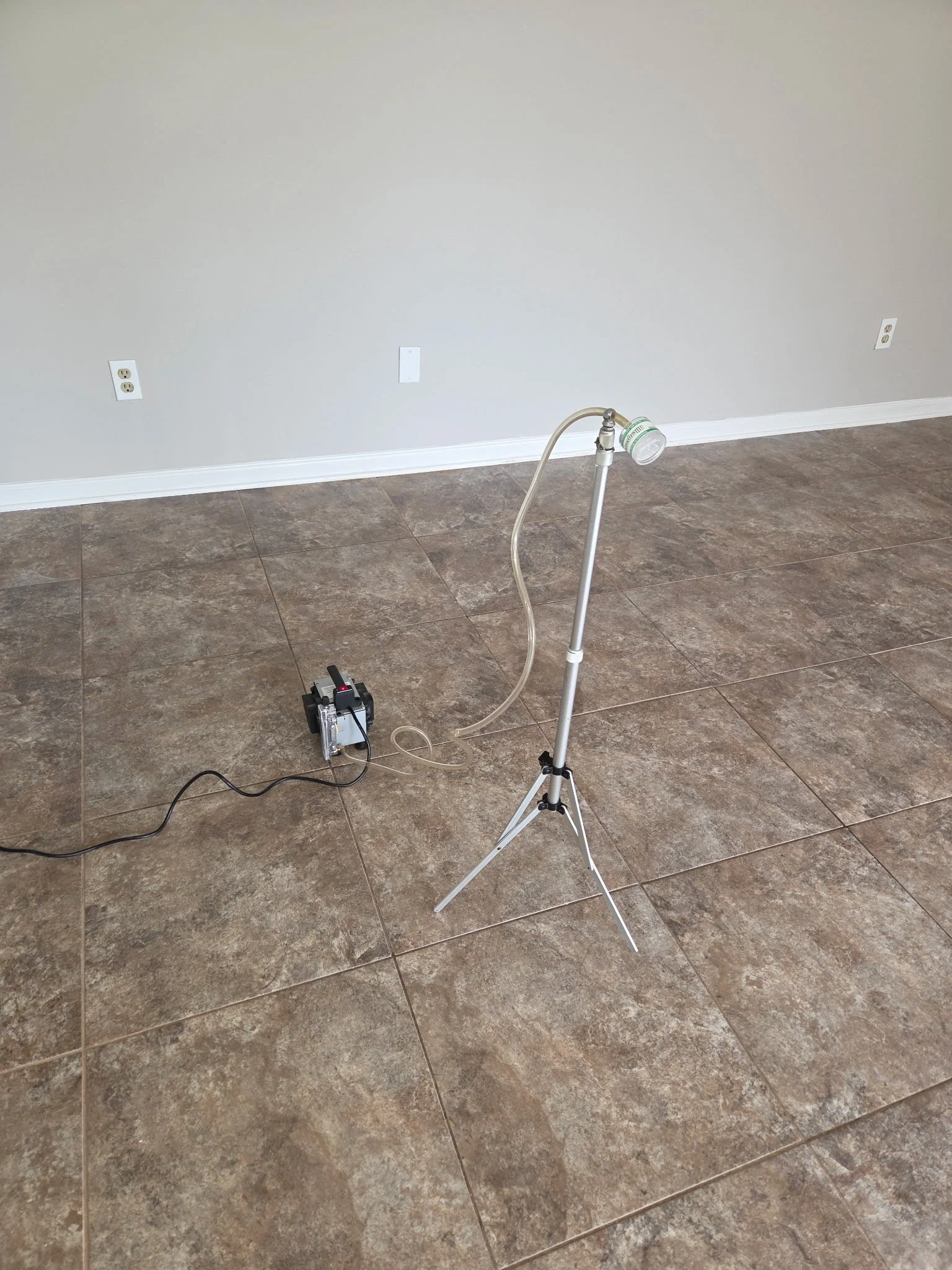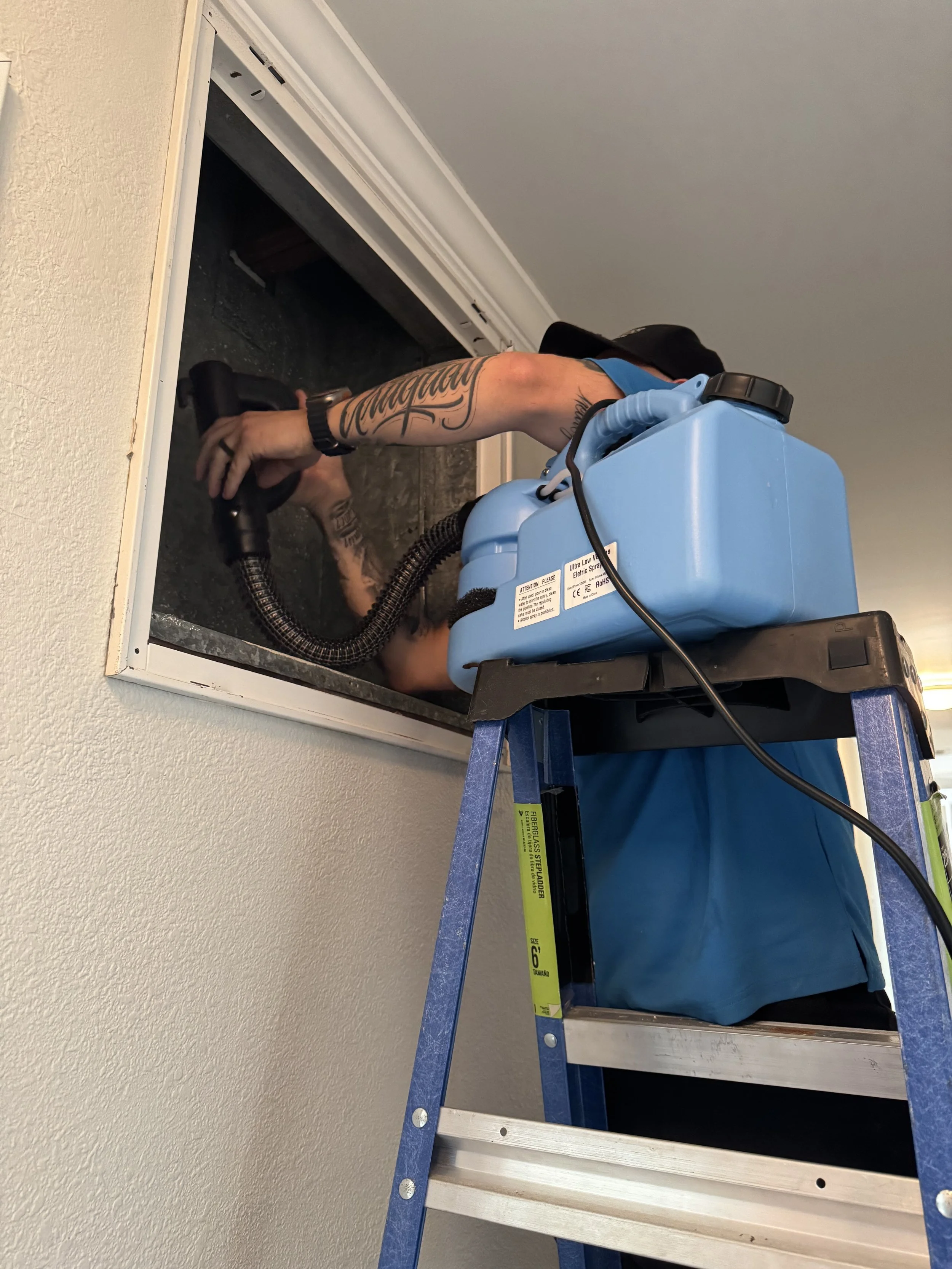HVAC Air Duct Cleaning
Air duct cleaning involves using specialized equipment to remove dust, debris, allergens, and other contaminants from your home's HVAC system. Professional cleaners employ powerful vacuums, brushes, and air whips to dislodge and collect debris from the ductwork and other components like coils and fans.
Signs that you need duct cleaning
While the National Air Duct Cleaners Association (NADCA) generally recommends cleaning ducts every 3 to 5 years, certain situations may require more frequent cleaning.
Visible dirt: Look inside your air vents and registers. If you see a buildup of dirt, dust, or pet hair, it's a sign that the ducts are dirty.
Excessive dust: If your home accumulates dust quickly despite regular cleaning, your air ducts may be circulating the particles throughout your living space.
Persistent odors: Musty or foul smells coming from your vents when the HVAC system runs can indicate mold, mildew, or other bacterial growth inside the ducts.
Uneven airflow: If some rooms are warmer or cooler than others, or if airflow from vents seems weak, it could be due to blockages in the ductwork.
Allergy symptoms: An increase in allergy-like symptoms such as sneezing, coughing, or congestion could be caused by allergens like pollen, pet dander, and dust mites circulating through the air.
Recent renovations: Construction and remodeling can introduce a significant amount of dust and debris into your HVAC system, requiring a thorough cleaning.
Pest infestation: Evidence of rodents or insects, such as droppings or nesting materials, in or around the ducts means you need professional cleaning immediately.
Benefits of duct cleaning
Cleaning your air ducts can improve your indoor environment in several ways.
Better air quality: Removing built-up contaminants, allergens, and mold spores helps improve the overall air quality in your home, which is especially important for those with allergies or respiratory issues.
Increased HVAC efficiency: Clogged ducts force your heating and cooling system to work harder to push air through, increasing energy consumption. Clean ducts allow air to flow more freely, making your system more efficient and potentially lowering your utility bills.
Extended HVAC lifespan: By reducing the strain on your system, duct cleaning can extend the lifespan of your HVAC unit and its components.
Cleaner home: With less dust circulating from the ductwork, you will notice less dust settling on surfaces, leading to a cleaner living space.
Odor elimination: Cleaning the ducts can remove the sources of unpleasant odors, such as pets, smoke, or mildew.
Dryer Vent Cleaning
Clogged dryer exhaust vents can cause expensive damage to clothes dryers and, of course, it is always a possibility of fire. Call us for a dryer vent cleaning estimate for your dryer vent cleaning.
Our techs are trained and skilled in successfully dryer vent cleaning and sealing. Dryer vent cleaning helps prevent fires, speeds up drying times, and may promote a longer dryer life.
The U.S. Consumer Product Safety Commission estimates that 15,500 fires associated with clothes dryers occur annually causing 10 deaths’ 310 injuries’ and more than $84.4 million in property damage annually. Lack of maintenance is the leading cause of dryer vent fires’ with lint cited as the leading material to ignite!
Your dryer’s ventilation system works to extract heat, dampness, and fiber particles from your clothes during the drying process. Regular vent maintenance enhances both dryer performance and safety standards!
When debris and lint accumulate in the vent system, it extends drying duration and risks overheating the appliance. The buildup restricts proper airflow and moisture release, leaving garments wet after cycles. Another common obstruction in dryer vents comes from small creatures making nests inside!
Operating your dryer beyond a 45-minute cycle wastes resources and time. Each wet laundry load contains approximately 1/2 gallon of water that needs evaporation. Among household appliances, dryers rank as one of the highest energy consumers. Extended running times significantly increase operational costs.
Restoration and New Construction Cleaning
Our Air Duct Cleaning for Restoration Service Companies and New Construction Air Duct Cleaning Cleaning services ensure the HVAC air distribution system is free from debris, dust, and contaminants left behind after construction or renovations, smoke, water, or weather damage.
We remove construction residue like drywall dust, wood particles, soot, and insulation, ensuring the indoor air is clean and healthy. This service is ideal for new builds, major renovations, or post-restoration projects where clean air and efficient HVAC performance are essential. Trust us to create a safe, fresh environment for your home or business.
The process
Prevention during construction: To minimize contamination, the HVAC system should not be run during major work that creates high levels of dust, such as sanding drywall. Inaccessible ducts should be sealed and protected.
Assessment: A professional will inspect the ductwork for construction debris and for damage that may have occurred during installation.
Containment and negative pressure: The system is placed under negative pressure using a specialized, high-powered vacuum to prevent dust from spreading into the living space.
Source removal: Technicians use agitation tools, such as air whips and rotating brushes, to dislodge debris from the interior surfaces of the ducts.
Complete HVAC cleaning: Along with the ducts, the entire HVAC system—including the air handler, blower motor, and evaporator coils—must be cleaned to prevent recontamination.
Sanitization (if necessary): Though not always needed for new construction, sanitizing agents may be used to inhibit microbial growth if moisture was present.
Final filter replacement: The standard HVAC air filters are replaced with new, clean filters at the end of the process.
Restoration duct cleaning
Restoration cleaning is required after a building has sustained damage from water or fire. It addresses more than just dust; the HVAC system can be contaminated with mold, bacteria, or toxic soot.
Restoration after a fire
Fire damage introduces toxic and corrosive particles of soot, ash, and smoke residue into the ductwork. Standard cleaning is insufficient to address these hazardous materials.
Specialized assessment: Technicians evaluate the extent of smoke and soot damage throughout the entire HVAC system.
Specialized cleaning: High-powered vacuums and agitation tools are used to dislodge soot and ash from the duct surfaces. HEPA vacuums are used to prevent the spread of harmful particles.
Deodorization and sanitization: The lingering smell of smoke is a significant concern. After cleaning, EPA-approved disinfectants and deodorizers are applied to neutralize odors and kill bacteria.
Duct sealing/coating: In some cases, a protective coating may be applied to the interior of the ducts to permanently seal in any remaining microscopic soot particles and prevent future corrosion.
Restoration after water damage
Water damage, whether from a flood, leak, or high humidity, creates a prime environment for mold and mildew growth.
Inspection for moisture: Professionals use moisture detection tools to find any standing water or dampness within the ductwork.
Addressing the moisture source: Before cleaning, the source of the water damage must be repaired.
Biocide treatment: EPA-registered biocides are applied to kill existing mold and inhibit future microbial growth.
Specialized cleaning: The ducts are thoroughly cleaned to remove any mold spores, mildew, and other debris.
HVAC inspection: The entire system, especially components like the evaporator coil, must be checked for mold and cleaned or replaced if necessary
Air Duct Repair and
Replacement
During the air duct cleaning process, it’s not unusual for us to find loose, disconnected, and slightly damaged air ducts. Ducts Air Duct Cleaning of Knoxville techs are prepared and equipped to repair and seal these types of air ducts.
There is no additional charge for repairing any visible and reachable minor tears, holes, and leaks during the air duct cleaning process.
Process of duct sealing
An HVAC technician will first inspect the system to locate leaks using a pressure test or visual inspection.
Any gaps, holes, and cracks are sealed with mastic sealant or professional-grade metal tape.
For larger systems, some companies may offer an aerosol-based sealant (such as Aeroseal) that is blown into the ductwork to find and seal leaks from the inside.
Air duct replacement
Full duct replacement is recommended when the damage is extensive, the ducts are old and inefficient, or there are significant health and safety concerns.
When to replace
Age of the system: Many types of ductwork start showing significant wear after 10–15 years, and a complete replacement is often necessary after 20–25 years, depending on the material.
Widespread damage: When leaks, holes, or corrosion are extensive throughout the system, patching them individually is a temporary fix.
Mold infestation: If mold has spread throughout the ductwork, particularly in hard-to-reach areas, cleaning may not be enough to resolve the issue. A full replacement may be necessary to ensure a healthy indoor environment.
Improper sizing: If your ducts were improperly sized for your home or a new HVAC unit, they can restrict airflow and create efficiency problems. Replacing them with correctly sized ducts can improve system performance.
Outdated materials: Some older ducts were made with asbestos-containing materials or have degraded so much that replacement is the safest and most effective option.
Indoor Quality Air Assessment
Indoor Air Quality (IAQ) Assessment is the process of testing air quality in the home for biological contaminants. Testing for biological contaminants include:
Molds
Bacteria
Household dust for pollutants and allergens
Formaldeyhde
VOCs (chemical offgasing)
Our comprehensive programs to improve Indoor air quality are focused on identifying the contaminants causing the issue. We use several methods to test for chemicals and pollutants using equipment that measures the concentrations of a specific contaminant.
Components of an indoor quality assessment
1. Site inspection
A professional visual inspection of the building looks for potential issues, including:
HVAC systems: Checking the condition of heating, ventilation, and air-conditioning systems, including filters and ducts. Poor maintenance is a common cause of IAQ problems.
Water damage and mold: Searching for visible mold or signs of moisture damage, which can lead to mold growth.
Potential pollution sources: Identifying materials and activities that could release pollutants, such as new furnishings, cleaning products, or construction.
2. Measurement of parameters
A variety of instruments are used to measure specific air quality parameters, including:
Particulate matter (PM): Monitoring concentrations of airborne particles, such as PM2.5 and PM10, which can enter the lungs.
Volatile organic compounds (VOCs): Measuring gaseous chemicals emitted from building materials, cleaning supplies, and other products.
Carbon dioxide (CO2): Assessing ventilation rates. High CO2 levels can indicate poor air exchange.
Carbon monoxide (CO): Testing for this colorless, odorless gas that can be emitted by faulty combustion appliances.
Temperature and humidity: Evaluating thermal comfort, as excessive moisture can contribute to mold and bacteria growth.
Biological contaminants: Testing for specific bacteria (like Legionella) or mold spores, especially in response to occupant health concerns.
3. Identification of pollution sources
After taking measurements, an assessor will work to pinpoint the specific causes of any identified pollution. Common sources include:
Inadequate ventilation
Mold or moisture damage
Building materials and furnishings
Cleaning products and pesticides
Occupant activities, such as smoking or remodeling
4. Data analysis and reporting
The collected data is compared to established standards from organizations like the U.S. Environmental Protection Agency (EPA) or the American Society of Heating, Refrigerating and Air-Conditioning Engineers (ASHRAE). The final report summarizes the findings and recommends strategies for improvement, known as mitigation.
5. Mitigation and remediation
Based on the assessment, a plan is developed to address the problems. Common mitigation strategies include:
Improving ventilation: Increasing the rate of fresh outdoor air exchange.
Source control: Removing or reducing the sources of pollution, such as by using low-VOC products.
Filtration: Installing or upgrading air filters (e.g., HEPA filters) in HVAC systems or standalone air purifiers.
Moisture control: Fixing leaks and controlling humidity to prevent mold growth.
Benefits of an IAQ assessment
Improved occupant health: Reduces health issues like allergies, asthma, and other respiratory problems.
Increased productivity: Creates a more comfortable and healthier environment, which can boost performance.
Energy savings: Optimizing HVAC systems based on assessment findings can lower energy costs.
Compliance with standards: Helps commercial buildings meet regulatory and certification standards, such as those from LEED and OSHA.
An air duct disinfectant fog service is
Fog disinfectant is a treatment that kills germs, mold, fungi, and other microbes inside your HVAC system after a professional cleaning. Using a specialized machine, an EPA-approved, non-toxic disinfectant is released as a fine mist to reach areas that traditional cleaning methods may miss.
How the service works
Professional cleaning: The process should always start with a thorough cleaning of the air ducts to remove dust, debris, and contaminants. The cleaning equipment typically includes powerful truck-mounted vacuums, air whips, and specialized brushes.
Fogging: After the ducts are cleaned, a fogging machine is used to distribute a fine, non-toxic mist of disinfectant throughout the entire duct system.
Neutralization: The disinfectant mist works to neutralize any remaining odor-causing particles, bacteria, mold, and viruses.
Drying: The solution is allowed to dry, leaving behind a sanitized surface.
Benefits of air duct disinfectant fogging
Improves indoor air quality: The fogging process neutralizes pollutants that can cause respiratory issues and allergy flare-ups.
Eliminates unpleasant odors: By killing odor-causing bacteria and fungi, fogging can get rid of musty smells from pests, mold, smoke, or stale air.
Combats mold and mildew: The disinfectant is specifically designed to neutralize mold spores, which can grow in the moist, dark environment of air ducts.
Peace of mind: You can feel more secure knowing that the air in your home is free from harmful pathogens.
Signs you need a disinfectant fog service
A disinfectant treatment is often an add-on service after a standard air duct cleaning and is not required for every cleaning. You should consider disinfectant fogging if you notice:
Visible mold: You can see mold growing inside or around your air ducts or HVAC unit.
Recent water damage: Your HVAC system has experienced a water leak or flood.
Persistent odors: A musty or stale odor lingers in your home, even after cleaning.
Pest infestation: Your ducts have had a recent infestation of rodents or insects.
Frequent illness or allergies: Residents experience unexplained allergy flare-ups or persistent respiratory issues.
